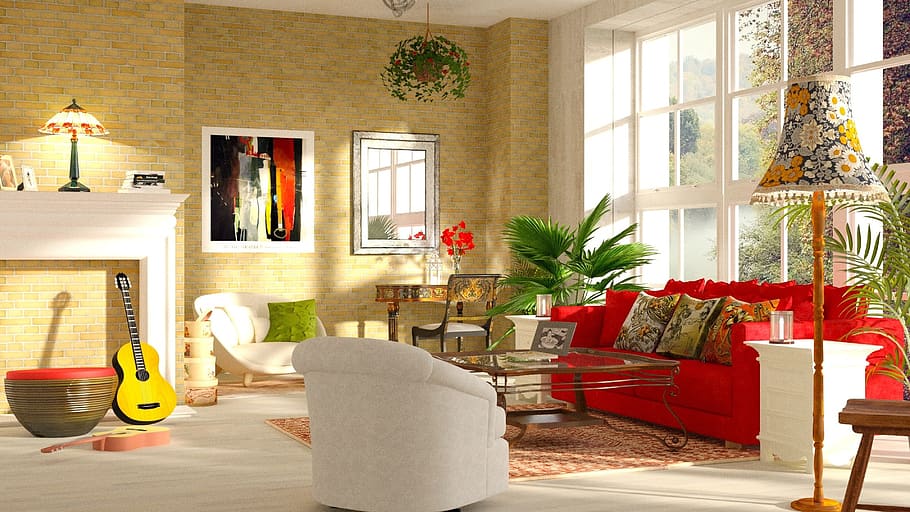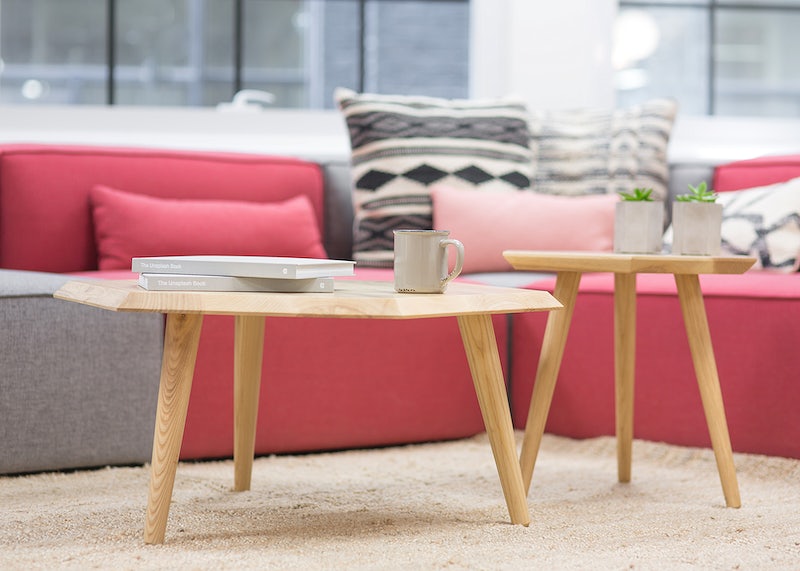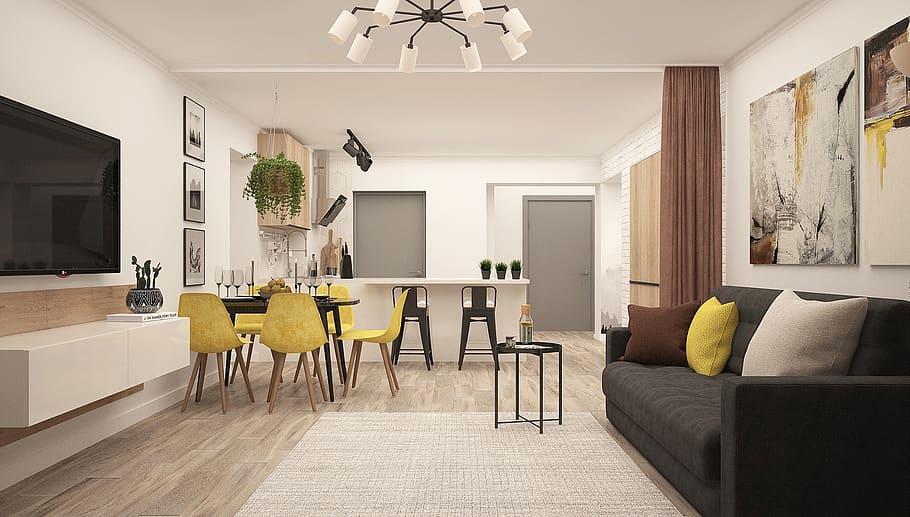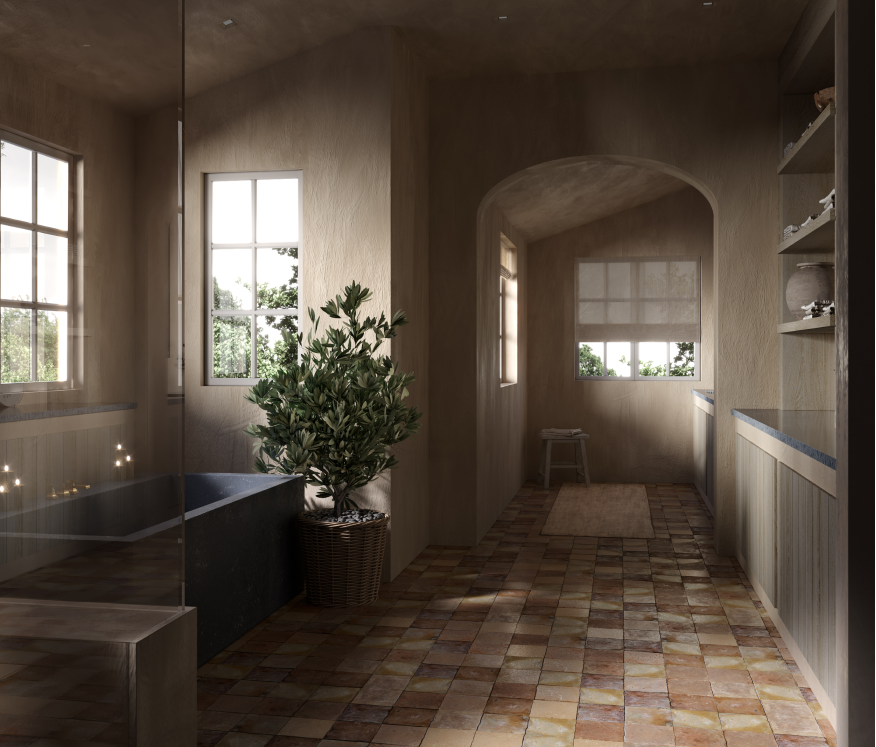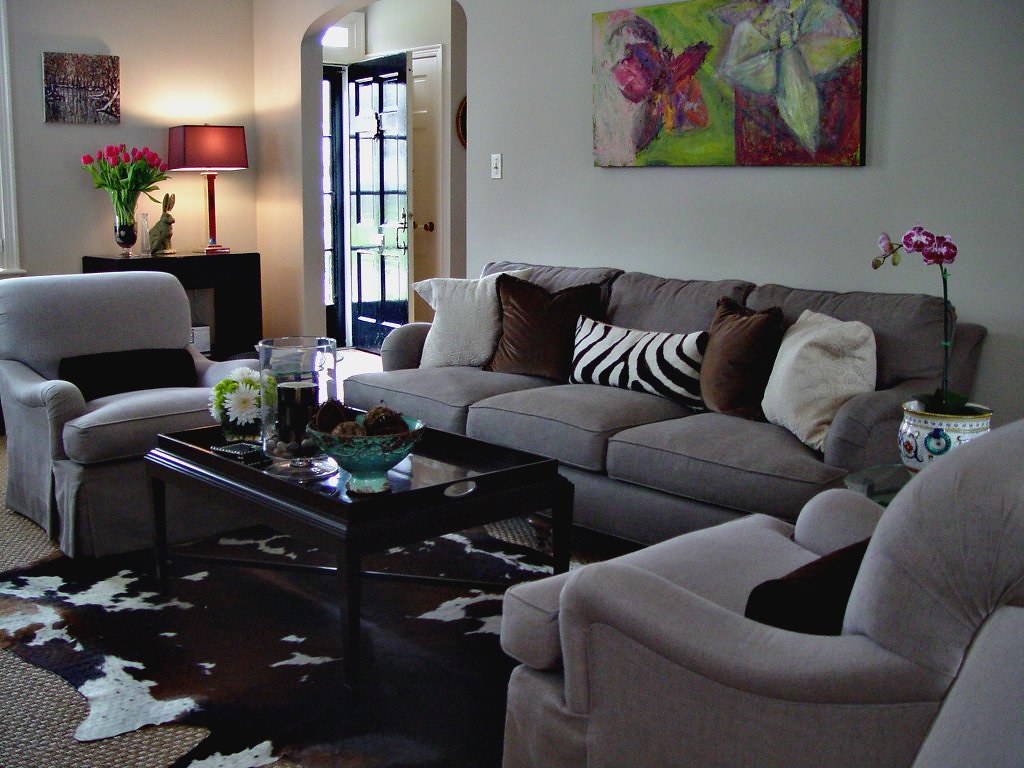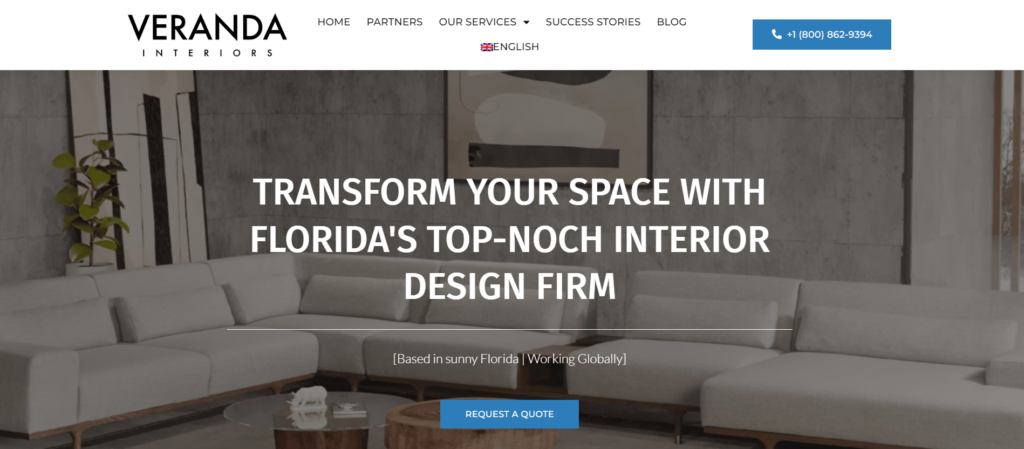Planning is like laying the foundation of a beautiful and harmonious home interior. It is the secret ingredient that transforms a house into a personal sanctuary, reflecting your unique style and enhancing your daily life.
Whether you’re starting from scratch or giving your existing space a makeover, careful planning will guide you toward creating a space that not only looks stunning but also serves a purpose.
In this article, we invite you to embark on a journey of exploration and discovery, where we will uncover the essential elements to consider when planning your home’s interior design.
So, fasten your seatbelts and get ready to unleash your creativity as we dive into the fascinating world of home interior designing.
Assessing your needs and lifestyle
Before diving into the design process or home decor ideas, it’s essential to assess your needs and lifestyle. Consider the purpose and function of each space in your home.
Is it a relaxing oasis, an efficient workspace, or a gathering spot for family and friends? Understanding the intended use of each room will guide your design choices.
Considerations for household members
Next, think about the needs of the household members. Do you have young children or pets that require durable and easy-to-clean surfaces?
Are there any specific requirements or preferences to accommodate family members with special needs? Considering these factors will ensure that your design is functional and practical.
Harmonizing lifestyle with design choices
Additionally, consider the lifestyle of the household. Are you an avid entertainer, requiring ample seating and open spaces for social gatherings? Or do you prefer a cozy and intimate atmosphere for quiet evenings at home? By aligning your design with your lifestyle, you can create a space that enhances your daily life.
Once you have a good understanding of your needs, you can start to think about the style and design of the space.
Also, you can consider residential interior designing services of well-reputed companies and famous interior design professionals.
Choosing a designing style
One of the most exciting aspects of home interior designing is selecting a design style that resonates with your personality and aesthetic preferences.
There are numerous home decor styles to choose from, each with its own unique characteristics. Some popular designing styles include:
- Traditional
- Contemporary
- Rustic
- Modern
Traditional: This style is characterized by its use of classic furniture, timeless finishes, and elegant details.
Contemporary: It is characterized by its use of modern furniture, sleek lines, and minimalist design.
Rustic: Rustic style is characterized by its use of natural materials, rustic furniture, and warm colors.
Modern: This style is characterized by its use of clean lines, geometric shapes, and neutral colors.
Factors to consider
When choosing a home interior designing, consider factors such as the architectural style of your home, your personal taste, and the overall ambiance you want to create.
Research different styles and gather inspiration from interior designing magazines, websites, and social media platforms. Create mood boards or Pinterest boards to visualize how each style would look in your space.
Consider existing elements
While exploring different styles, keep in mind the existing elements in your home, such as flooring, cabinetry, and architectural features.
Ensure that the designing style you choose complements these elements rather than clashes with them. This will help create a harmonious and cohesive look throughout your home.
Color and lighting
Color and lighting are dynamic duos that can transform a dull and lifeless space into a captivating and inviting sanctuary.
Create a Harmonious Color Palette for Your Space
Like an artist’s palette, colors have the power to evoke emotions and set the tone for a room. Imagine the warm embrace of a sun-kissed room with golden hues or the soothing embrace of a serene blue oasis that washes away the stresses of the day.
By carefully selecting a color palette that resonates with your desired atmosphere, you can create a space that looks visually pleasing and feels like a sanctuary tailored to your taste.
Also, Consider color psychology. For example, warm tones like red and orange create a cozy and intimate feel, while cool tones like blue and green evoke a sense of calm and tranquility.
Experiment with different color combinations and use color swatches or paint samples to see how they look in your space before committing.
Enhance your space with proper lighting design
But colors alone cannot work their magic without the proper lighting. Just as a spotlight can illuminate a stage, lighting can enhance the ambiance and functionality of a room.
Imagine the gentle glow of a table lamp casting a warm and cozy glow over your favorite reading nook or the soft wash of light from recessed fixtures creating a tranquil and intimate setting for a relaxing evening.
By incorporating a mix of ambient, task, and accent lighting, you can create layers of illumination that serve a practical purpose and add depth and drama to your space.
Natural lighting deserves special mention in the realm of color and lighting. The gentle rays of sunlight streaming through a window can breathe life into a room, creating a natural and vibrant atmosphere.
Consider the orientation of your windows and how the natural light interacts with the colors in your space.
Experiment with different window treatments and strategically place mirrors to reflect light and make smaller spaces appear larger.
Furniture and accessories
Selecting the right furniture and accessories is crucial for achieving a cohesive and well-designed space. Choose furniture that fits the scale and proportions of the room.
Consider the layout and flow of the space, ensuring that there is enough room for movement and that furniture pieces are not overcrowded.
Add personality with thoughtful accessories
When it comes to accessories, opt for pieces that complement your design style and add personality to the space.
Artwork, rugs, throw pillows, and decorative objects can all contribute to the overall aesthetic. However, be mindful of not over-accessorizing, as it can make a space feel cluttered. Select a few key pieces that make a statement and let them shine.
Create cohesion with materials and finishes
To create a cohesive look, consider the materials and finishes of your furniture and accessories. Aim for a balance between different textures and patterns.
For example, if you have a sleek and modern sofa, you can add visual interest with textured throw pillows or a patterned rug.
Budgeting and planning
Before embarking on your interior designing project, it’s essential to establish a realistic budget. Determine how much you are willing to spend on each aspect of the project, including furniture, accessories, and any professional services you may require.
Research the average costs of different items and services to ensure that your budget aligns with your expectations.
Develop a well-structured project timeline
Alongside budgeting, planning the project timeline is crucial. Determine a start and end date for the project and break it down into smaller tasks.
Consider any potential disruptions or inconveniences that may arise during the renovation process. Having a well-structured plan will help you stay organized and ensure that the project progresses smoothly.
Strategic and budget-friendly shopping
To manage costs and stay on track, consider shopping for furniture and accessories during sales or clearance periods.
Look for affordable alternatives to high-end items, such as thrift stores or online marketplaces. Repurposing existing items or DIY projects can also help save money while adding a personal touch to your design.
Hiring professionals
While some homeowners may prefer to tackle their interior design projects themselves, there are several reasons to consider hiring a professional interior designing company.
Designers have the expertise and knowledge to bring your vision to life, considering factors such as functionality, aesthetics, and budget constraints.
What to consider?
When looking for the right designer for your project, thoroughly research and review their portfolio. Look for designers who have experience in the style you desire and have successfully completed projects similar to yours.
Schedule consultations to discuss your ideas, expectations, and budget. This will help you determine if the designer is the right fit for your project.
What to expect?
During the design process, expect open and frequent communication with your designer. They will present you with design concepts, materials, and furniture options, guiding you through the decision-making process. Be open to their suggestions and provide feedback to ensure that the final design aligns with your vision.
In the tapestry of your home, every thread of planning and design weaves together to create a masterpiece that tells the story of who you are and how you live.
With careful consideration of your needs, style, and the interplay of colors and lighting, you have the power to transform your home into a sanctuary that not only delights the eyes but also nourishes the soul.
And don’t be afraid to dream big. Let your imagination soar as you envision the possibilities for each room, from the cozy nooks that beckon relaxation to the vibrant spaces that foster creativity and connection. With a well-thought-out budget and a clear plan, you can bring your vision to life, one carefully chosen piece at a time.
Remember, interior design is a reflection of your journey, your experiences, and your aspirations. It is an ever-evolving canvas allowing you to express yourself and create a haven that feels like home. So, let the planning begin!
FAQs
What do you need to consider when designing interiors?
When designing interiors, it’s essential to consider the purpose and function of each space in your home, the needs of the household members, the lifestyle of the household, the design style that resonates with your personality and aesthetic preferences, colors, and lighting, furniture and accessories, budgeting and planning, and the option of hiring professionals.
How do you plan an interior design for a house?
Before beginning your interior design planning, it is crucial to evaluate your needs and lifestyle, decide on a style that suits you, think about the purpose and function of the space, and pick out appropriate colors, furniture, and accessories.
Additionally, it is important to establish a budget and hire a professional interior designing company to ensure the smooth execution of the plan.
Where do I start to design a house?
To start designing a house, it’s important to assess your needs and lifestyle, consider the purpose and function of each space, choose a design style, and consider color and lighting.
You can also gather inspiration from interior design magazines, websites, and social media platforms, create mood boards, and research different styles.
How to design a house step by step?
Designing a house involves several steps that can be followed:
Assess needs and lifestyle: Identify the purpose and function of each space and consider the needs and preferences of the household members.
Choose a design style: Select a design style that reflects your personal taste and complements the house’s architectural style.
Consider color and lighting: Choose a color palette that sets the desired mood and ambiance, and incorporate a mix of ambient, task, and accent lighting.
Select furniture and accessories: Choose furniture and accessories that fit the space and style, ensuring a balance between aesthetics and functionality.
Budgeting and planning: Establish a realistic budget and project timeline, considering costs for materials, furniture, and any professional services.
Execution: Begin implementing the design plan, whether through DIY projects or with the assistance of professionals.
Evaluate and adjust: Continuously assess the progress of the design, make necessary adjustments, and seek feedback to ensure the final result meets your expectations.
How do I design my whole house?
To design your whole house, consider the purpose and function of each space, choose a design style, consider color and lighting, select the right furniture and accessories, budget and plan, and possibly hire professionals.
Determine a realistic budget and a start and end date for the project, and break it down into smaller tasks. Gather inspiration from interior design magazines, websites, and social media platforms, and create mood boards to visualize how each style would look in your space.

